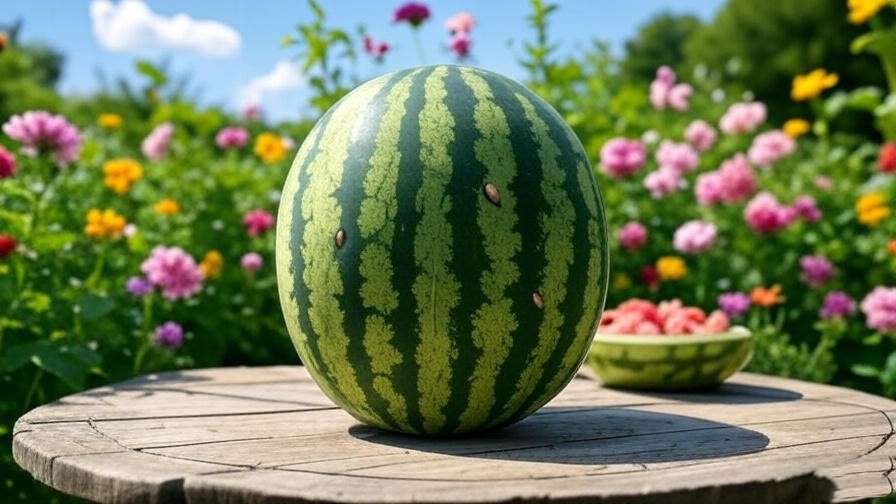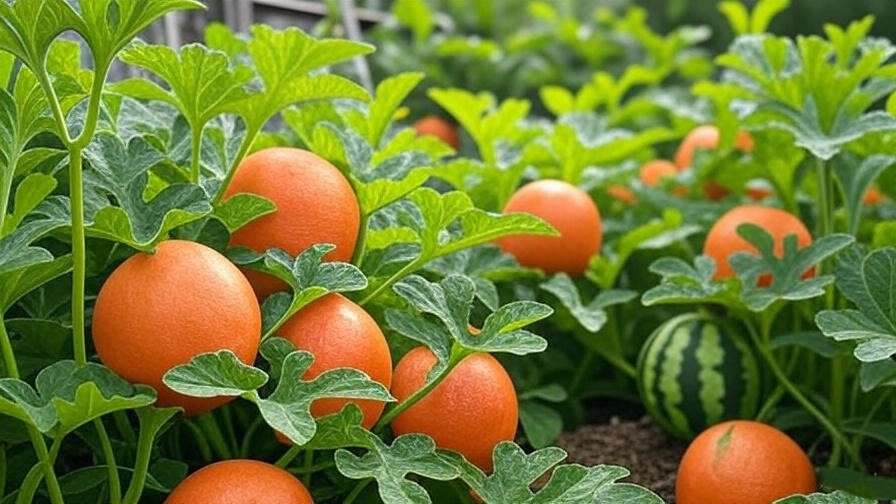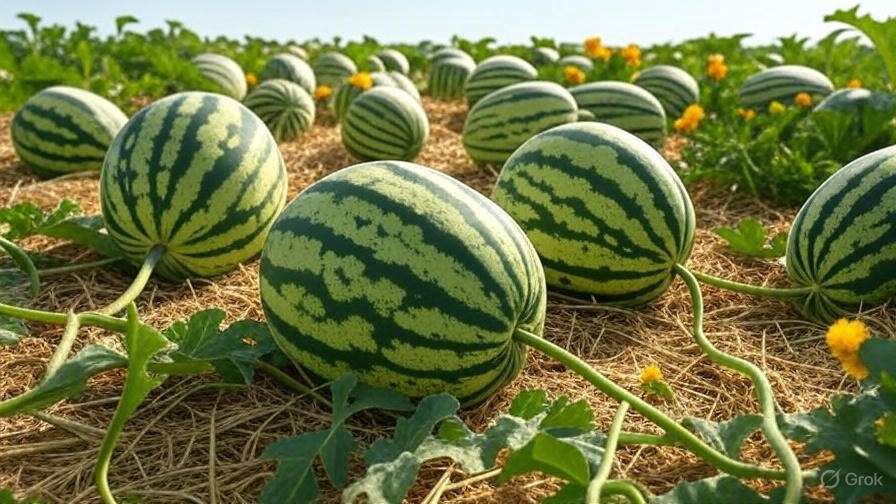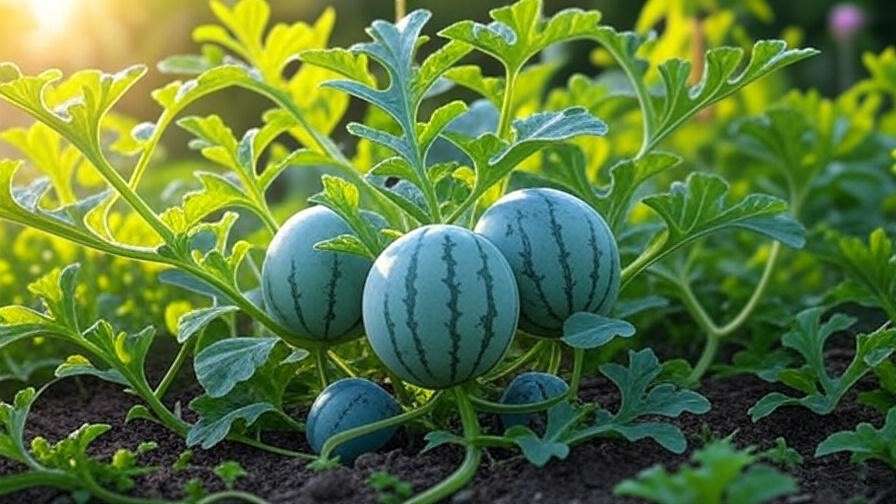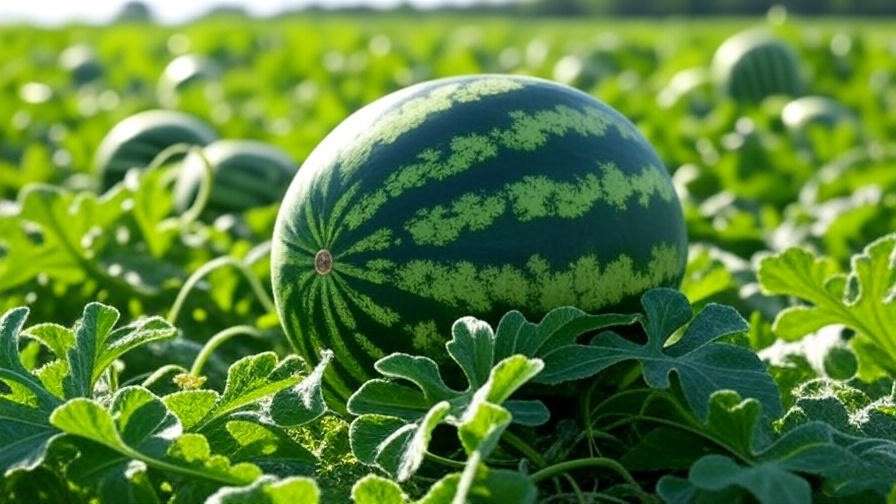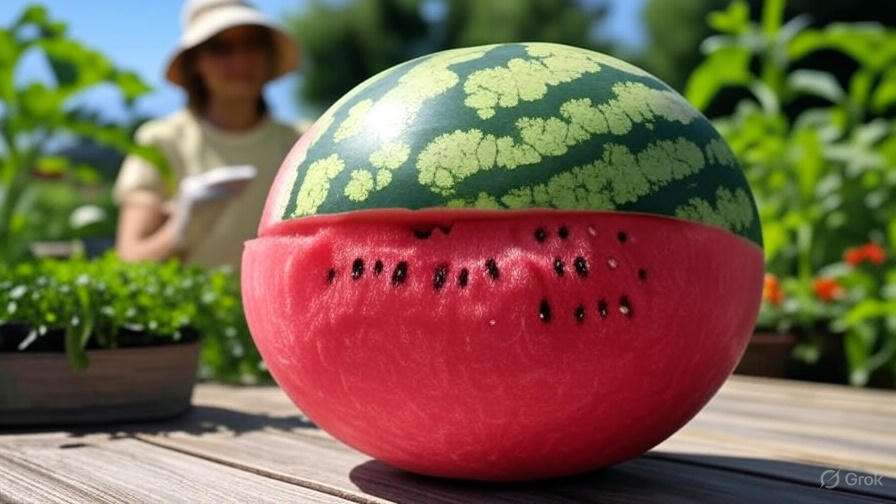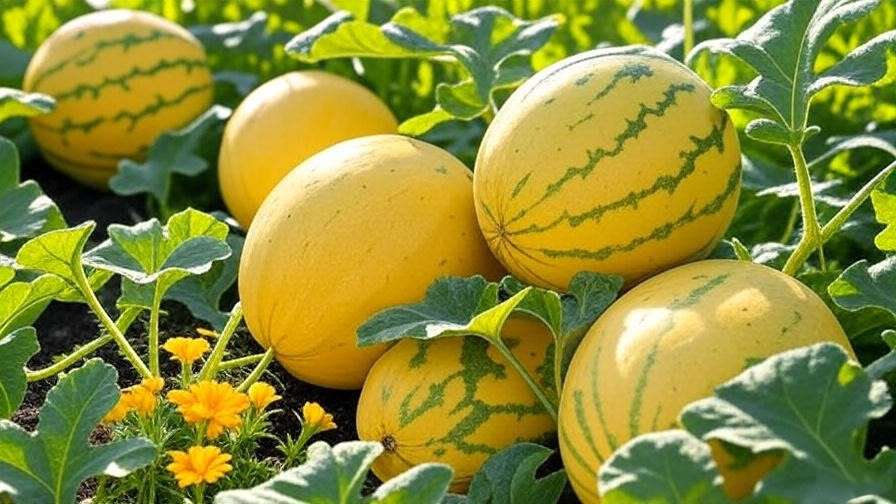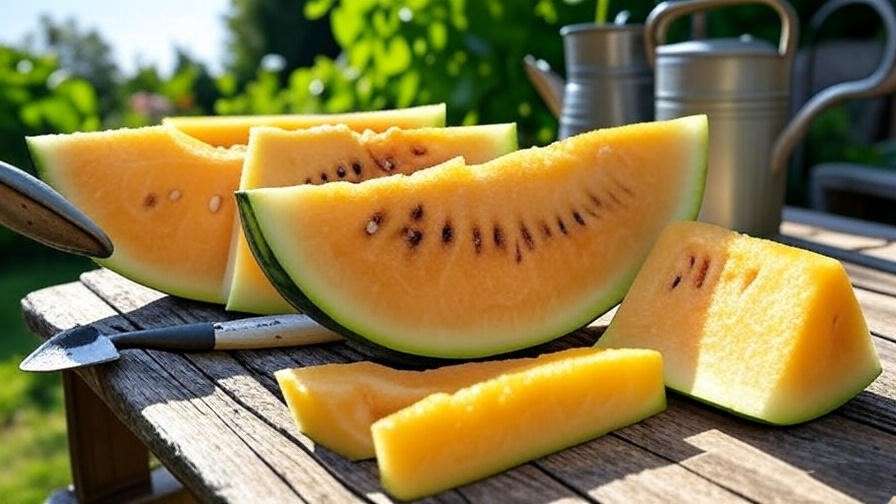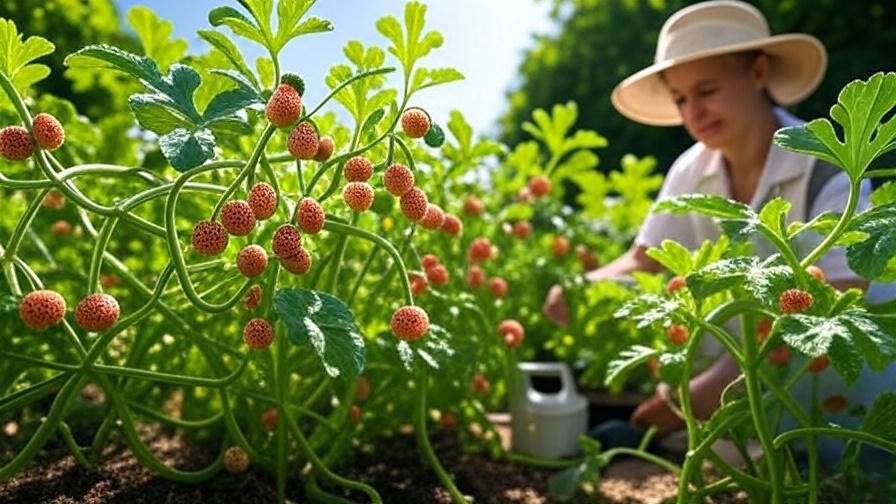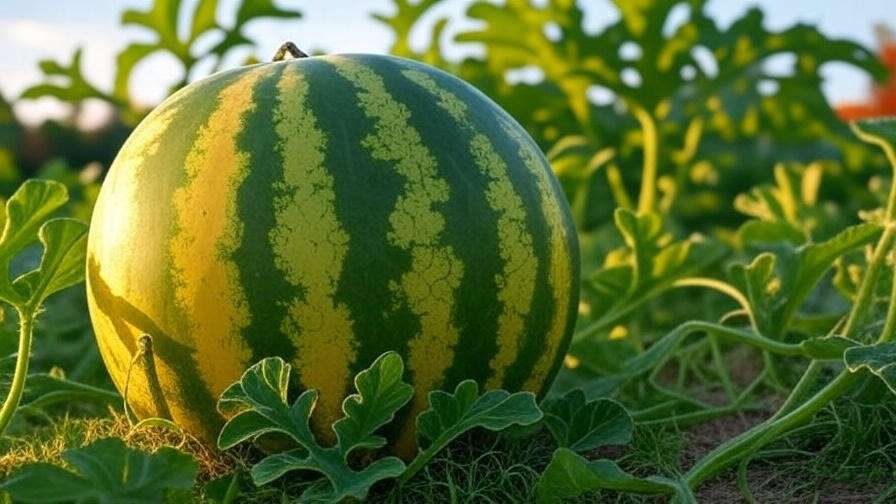Imagine sinking your teeth into a juicy, vibrant sangria watermelon, its sweet-tart flavor bursting with summer freshness, grown right in your own backyard! 🌞 Cultivating sangria watermelon seeds is a rewarding journey for any gardener, transforming your garden into a haven of delicious, nutrient-packed fruits. Whether you’re a novice or a seasoned horticulturist, this guide offers expert-backed, step-by-step advice to ensure a bountiful harvest. With over a decade of experience in fruit cultivation, I’ve crafted this comprehensive resource to help you master growing sangria watermelons, from seed selection to savoring your harvest. Let’s dive into the art and science of growing these stunning fruits, ensuring your garden thrives with flavor and beauty! 🌿
Understanding Sangria Watermelon Seeds 🌟
What Are Sangria Watermelon Seeds?
Sangria watermelons are a hybrid variety celebrated for their deep red flesh, sweet-tart flavor, and compact size, making them ideal for home gardens. Unlike traditional watermelons, sangria watermelons boast a higher lycopene content, giving them their vibrant hue and antioxidant benefits. Developed through careful crossbreeding, these hybrids are known for their disease resistance and adaptability to various climates. According to seed catalogs from trusted suppliers like Johnny’s Selected Seeds, sangria watermelons typically produce fruits weighing 10–15 pounds, with shorter vines that suit smaller spaces. Their unique appearance and flavor make them a favorite among gardeners and food enthusiasts alike. 🍉
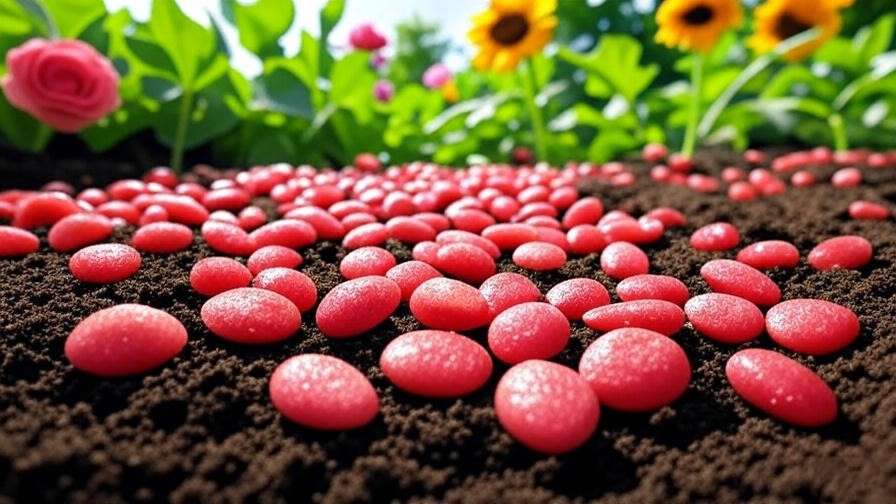
Benefits of Growing Sangria Watermelons
Why choose sangria watermelons for your garden? Beyond their delicious taste, these fruits offer significant nutritional benefits. They’re rich in vitamins A and C, supporting immune health and skin vitality, and their high lycopene levels promote heart health. From a gardening perspective, sangria watermelons are a practical choice: their compact vines require less space than traditional varieties, and their disease-resistant traits make them easier to grow. They’re perfect for urban gardeners, small-space growers, or anyone looking to add a visually striking, flavorful fruit to their harvest. Plus, their versatility in recipes—from fresh slices to smoothies—makes them a crowd-pleaser. 🌸
Preparing to Grow Sangria Watermelon Seeds 🛠️
Choosing High-Quality Seeds
The foundation of a successful harvest starts with selecting high-quality sangria watermelon seeds. Opt for seeds from reputable suppliers like Burpee or Seed Savers Exchange to ensure genetic purity and viability. Look for “F1 hybrid” labels, which guarantee consistent growth and fruit quality. Check the seed packet for harvest dates and ensure the seeds are fresh (ideally packaged within the last year). Pro Tip: Store seeds in a cool, dry place to maintain their germination potential. Avoid purchasing from unverified sources, as poor-quality seeds can lead to disappointing yields. 🌱
Best Time to Plant
Timing is critical when planting sangria watermelon seeds. These warm-season crops thrive when soil temperatures are between 70°F and 85°F, typically in late spring to early summer. For USDA hardiness zones 5–9, aim to plant after the last frost (e.g., mid-May in the Midwest or April in the South). In cooler climates, starting seeds indoors 4–6 weeks before the last frost can give you a head start. Regional Example: In the Pacific Northwest, wait until June for direct sowing, while Southern gardeners can plant as early as March. Use a soil thermometer to confirm optimal conditions for germination. ☀️
Soil and Site Selection
Sangria watermelons demand well-drained, loamy soil with a pH of 6.0–7.0 for optimal growth. Test your soil using a kit or consult your local university extension service (e.g., Cornell University’s guidelines) to ensure proper pH and nutrient levels. Choose a site with full sun exposure—6–8 hours daily—to maximize photosynthesis and fruit development. Prepare the site by clearing weeds and incorporating organic matter like compost or aged manure to boost soil fertility. Expert Insight: Adding a 2-inch layer of organic mulch after planting helps retain moisture and regulate soil temperature. 🌍
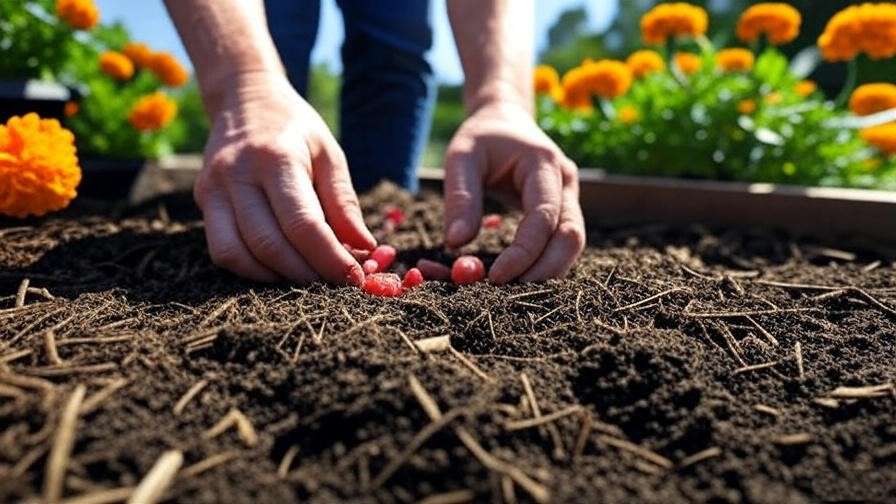
Step-by-Step Guide to Planting Sangria Watermelon Seeds 🌿
Starting Seeds Indoors
Starting sangria watermelon seeds indoors is a smart strategy, especially in cooler climates. Begin 4–6 weeks before the last frost using seed trays or biodegradable peat pots filled with a seed-starting mix. Soak seeds in lukewarm water for 4–6 hours to enhance germination, then plant them ½ inch deep. Maintain a warm environment (75°F–80°F) using a heat mat and ensure consistent moisture without waterlogging. Common Mistake: Overwatering can cause seed rot, so use a spray bottle to mist the soil lightly. Within 7–10 days, you’ll see sprouts ready to grow! 🌱
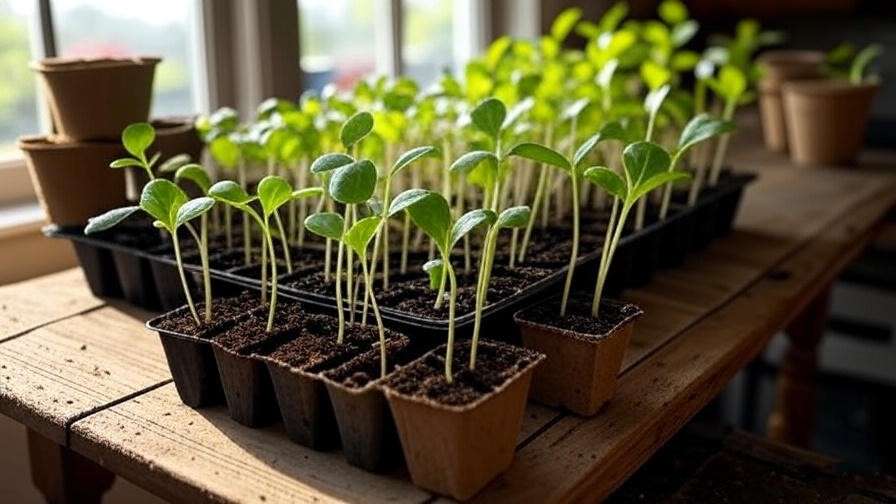
Transplanting Seedlings Outdoors
Once seedlings develop 2–3 true leaves and outdoor soil temperatures are consistently above 70°F, it’s time to transplant. Harden off seedlings over 7–10 days by gradually exposing them to outdoor conditions—start with 1–2 hours of sunlight and increase daily. Plant seedlings 3–4 feet apart in rows spaced 6–8 feet apart to accommodate sprawling vines. Dig holes slightly larger than the root ball, add compost, and water thoroughly after planting. Pro Tip: Use black plastic mulch to warm the soil and suppress weeds, boosting early growth. 🌞
Direct Sowing Option
For gardeners in warmer climates, direct sowing is a viable option after the last frost. Create mounds or hills (12–18 inches wide, 6 inches high) to improve drainage and soil warmth. Plant 2–3 seeds per mound, ½ inch deep, and thin to the strongest seedling after germination. Space mounds 4–6 feet apart to allow vines to spread. Expert Tip: Cover newly sown seeds with a lightweight row cover to protect against pests and maintain warmth, removing it once seedlings are established. 🌾
Caring for Sangria Watermelon Plants 🌞
Watering Requirements
Consistent moisture is key to healthy sangria watermelon plants, but overwatering can lead to root rot. Provide 1–2 inches of water per week, adjusting based on rainfall. Use drip irrigation or soaker hoses to deliver water directly to the soil, keeping foliage dry to prevent fungal diseases. Expert Insight: Studies from the University of Florida’s agricultural extension show that targeted irrigation reduces the risk of powdery mildew by up to 30%. Water deeply in the morning to allow excess moisture to evaporate during the day. 💧
Fertilizing for Optimal Growth
Sangria watermelons need balanced nutrition to thrive. Apply a balanced fertilizer (10-10-10) at planting to support early growth. Once vines begin to spread, switch to a phosphorus- and potassium-heavy fertilizer (e.g., 5-10-10) to promote flowering and fruit development. Apply fertilizer every 2–3 weeks, following package instructions to avoid over-fertilization, which can lead to lush foliage but small fruits. Caution: Conduct a soil test before fertilizing to tailor nutrient applications to your garden’s needs. 🌿
Pest and Disease Management
Sangria watermelons are relatively hardy but can face challenges from pests like aphids, cucumber beetles, and spider mites. Use organic controls like neem oil or insecticidal soap, and plant companion plants like marigolds to deter pests naturally. Common diseases include powdery mildew and fusarium wilt, which can be mitigated with proper spacing, good air circulation, and crop rotation. Expert Tip: Apply row covers early in the season to protect young plants from pests, removing them during flowering to allow pollination. 🐞
Supporting Vines and Fruits
To save space or protect fruits, consider trellising sangria watermelon vines using sturdy A-frame trellises or cattle panels. Support developing fruits with slings or netting to prevent them from pulling vines down. Prune secondary vines (those not bearing fruit) to direct energy toward fruit production. Pro Tip: Check trellises weekly to ensure they can handle the weight of maturing fruits, which can reach 10–15 pounds. This approach is especially useful for urban gardeners with limited space. 🌱
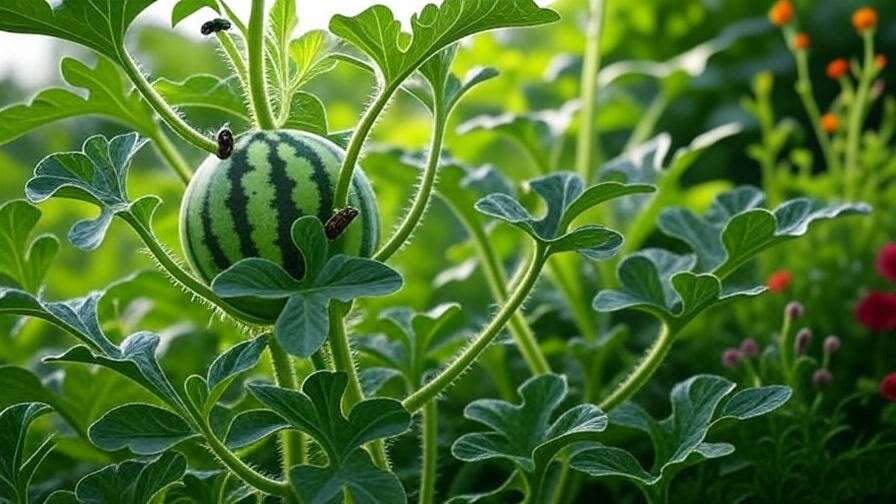
Harvesting and Enjoying Sangria Watermelons 🍉
When and How to Harvest
Knowing when to harvest your sangria watermelons is crucial for peak flavor and texture. Look for these telltale signs of ripeness: the underside of the fruit turns creamy yellow, the rind takes on a dull, waxy appearance, and tapping the watermelon produces a hollow sound. Typically, sangria watermelons are ready to harvest 75–85 days after planting, depending on the variety and growing conditions. To harvest, use a sharp knife or pruning shears to cut the stem, leaving about 2 inches attached to the fruit to prevent rot. Pro Tip: Harvest in the early morning when temperatures are cooler to preserve sweetness and juiciness. Avoid pulling fruits off the vine, as this can damage both the plant and the watermelon. 🌅
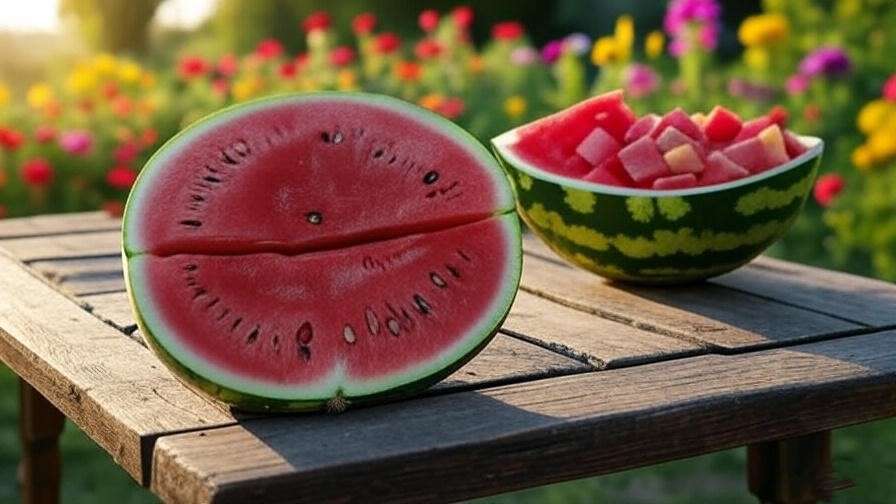
Storing and Using Your Harvest
Once harvested, sangria watermelons can be stored at room temperature (around 70°F) for 1–2 weeks or refrigerated at 45°F–50°F for up to a month. To maintain quality, avoid stacking fruits, as this can cause bruising. For longer storage, wrap cut pieces tightly in plastic wrap and refrigerate for up to a week. Sangria watermelons shine in a variety of culinary applications: enjoy them fresh in slices, blend them into refreshing smoothies, or toss them into salads for a sweet-tart crunch. Recipe Idea: Try a sangria watermelon smoothie by blending 2 cups of cubed watermelon, 1 cup of frozen strawberries, a splash of orange juice, and a handful of mint leaves for a vibrant summer drink. 🍹 You can also cube and freeze the flesh for year-round enjoyment in desserts or cocktails.
Troubleshooting Common Issues ⚠️
Poor Germination Rates
If your sangria watermelon seeds fail to sprout, several factors could be at play. Old or low-quality seeds may have reduced viability, so always purchase from trusted suppliers and check the packaging date. Cold soil temperatures (below 70°F) or improper planting depth (too deep or too shallow) can also hinder germination. To address this, test seed viability by soaking a few seeds in water for 24 hours—if they sink, they’re likely viable. Use a heat mat to maintain soil temperatures and plant seeds at a consistent ½-inch depth. Expert Solution: If germination rates remain low, try scarifying seeds (gently nicking the seed coat) to encourage sprouting. 🌱
Small or Flavorless Fruits
Nothing is more disappointing than harvesting undersized or bland sangria watermelons. Common causes include nutrient deficiencies, inadequate pollination, or overcrowding. Ensure your soil is rich in phosphorus and potassium during the fruiting stage, as these nutrients support fruit development. Hand-pollination can boost yields—use a small paintbrush to transfer pollen from male to female flowers (identifiable by the small fruit at the base). Overcrowding can be mitigated by maintaining proper spacing (3–4 feet between plants). Expert Insight: Research from the University of Georgia suggests that inadequate pollination can reduce fruit size by up to 50%, so encourage pollinators like bees by planting pollinator-friendly flowers nearby. 🐝
Vine Wilting or Fruit Rot
Wilting vines or rotting fruits often stem from overwatering, fungal infections, or poor drainage. Sangria watermelons prefer consistent moisture but cannot tolerate waterlogged soil. Ensure your planting site has excellent drainage, and avoid overhead watering to keep foliage dry. Fungal diseases like fusarium wilt or anthracnose can be prevented with crop rotation and proper air circulation. If rot occurs, remove affected fruits immediately to prevent spread. Solution: Apply an organic fungicide like copper-based sprays at the first sign of disease, and amend soil with compost to improve drainage. 🌧️
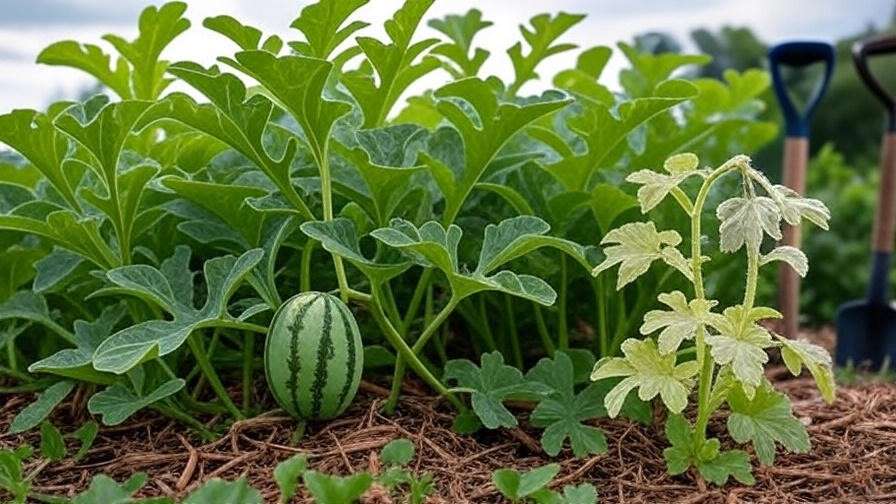
Advanced Tips for Expert Growers 🌾
For seasoned gardeners looking to elevate their sangria watermelon game, consider these advanced strategies. Experiment with grafting sangria watermelon scions onto disease-resistant rootstocks, such as those used for pumpkins, to enhance vigor and yield. This technique, widely used in commercial farming, can increase fruit production by 20–30%, according to studies from North Carolina State University. Another approach is to use reflective mulch (silver or red plastic) to boost light exposure and deter pests like aphids. For those with limited space, vertical gardening with trellises can maximize yields—train vines upward and support fruits with durable slings. Expert Tip: Monitor soil micronutrients like boron and magnesium, as deficiencies can subtly affect fruit quality. Conduct annual soil tests to fine-tune your approach. 🧑🌾
Enhancing Your Garden with Companion Planting 🌼
Companion planting can significantly improve your sangria watermelon crop. Plants like marigolds and nasturtiums repel pests such as aphids and whiteflies, while herbs like basil and oregano enhance soil health and attract pollinators. Avoid planting watermelons near potatoes or cucumbers, as they compete for nutrients and are susceptible to similar pests. Pro Tip: Sow a cover crop like clover in the off-season to enrich the soil and suppress weeds, setting the stage for a healthier watermelon crop. This holistic approach not only boosts yields but also creates a thriving, biodiverse garden ecosystem. 🌿
FAQs About Growing Sangria Watermelon Seeds ❓
To address common reader queries and enhance SEO value, here are answers to frequently asked questions:
Q: How long does it take for sangria watermelon seeds to germinate?
A: Sangria watermelon seeds typically germinate in 7–10 days under optimal conditions (70°F–85°F soil temperature and consistent moisture).
Q: Can I grow sangria watermelons in containers?
A: Yes, choose compact varieties and use large containers (15–20 gallons) with well-drained soil. Provide trellising for vine support.
Q: What’s the best way to ensure pollination?
A: Encourage natural pollinators by planting flowers like zinnias or use hand-pollination techniques to transfer pollen between flowers.
Q: How do I know if my watermelon is ripe?
A: Look for a yellow underside, a dull rind, and a hollow sound when tapped. The tendril nearest the fruit should also be dry.
Conclusion: Your Path to a Vibrant Sangria Watermelon Harvest 🎉
Growing sangria watermelon seeds is more than a gardening project—it’s a journey to cultivate a delicious, nutrient-rich fruit that brings joy to your table and garden. By following this comprehensive guide, you’re equipped with expert-backed strategies to select quality seeds, prepare your soil, nurture healthy plants, and troubleshoot challenges. Whether you’re savoring a juicy slice or blending a refreshing smoothie, your sangria watermelons will be a testament to your gardening prowess. Start planting today, and let your garden burst with vibrant, fruitful success! Share your progress in the comments or connect with our gardening community’s newsletter for more tips. 🌱🍉

